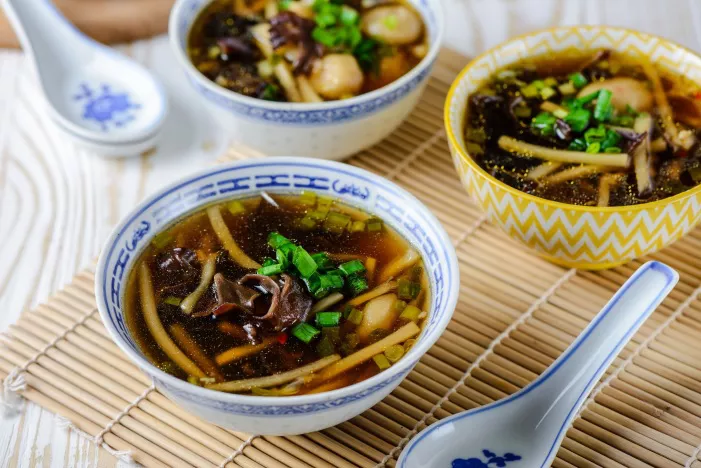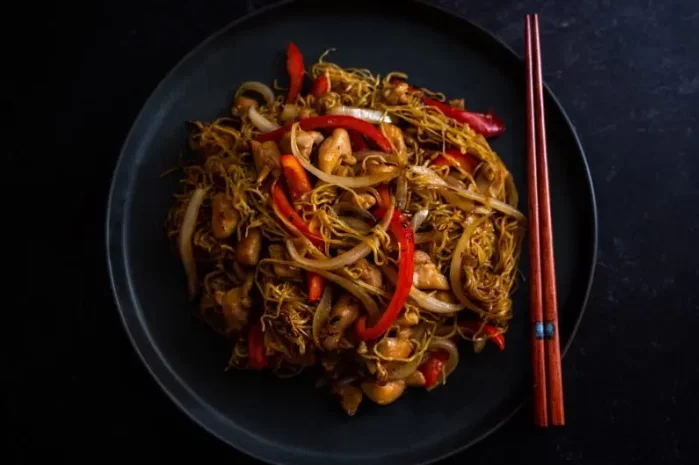Chinese cuisine is renowned for its rich and diverse traditions, and soups hold a special place in this culinary landscape. Chinese soups are celebrated for their depth of flavor, nourishing properties, and versatility. From hot and sour to delicate clear broths, they cater to a wide range of tastes and occasions. In this comprehensive guide, we will explore the art of making Chinese soups, from selecting the finest ingredients to mastering the techniques that result in a delightful, heartwarming, and flavorful bowl of soup.
The Essence of Chinese Soups
Chinese soups are a reflection of the country’s culinary philosophy, rooted in balance, harmony, and nourishment. They are designed to restore and maintain the body’s equilibrium, catering to the principles of yin and yang. A good Chinese soup is not just about taste; it is about providing health, comfort, and pleasure.
Choosing the Perfect Base
The foundation of any Chinese soup is the base, which can be a clear broth or a rich stock. The choice of base sets the tone for the entire soup. Some common bases include:
Chicken Stock: A mild, versatile option that serves as the base for many Chinese soups.
Beef Stock: Provides a robust, hearty flavor, ideal for beef noodle soups and stews.
Vegetable Broth: A vegetarian option made from a mix of vegetables, providing a clean and light flavor.
Pork Bone Broth: A rich and savory base often used in noodle soups and hearty stews.
Fish Stock: Ideal for seafood soups, it imparts a delicate and slightly sweet flavor.
Choosing the right base is essential as it forms the canvas upon which you’ll layer flavors and textures.
The Art of Seasoning: Balancing Flavors
Chinese soups are renowned for their complex and balanced flavors. To create this harmony, traditional seasonings and aromatics play a crucial role. These may include:
Soy Sauce: Adds saltiness and an umami depth to the soup.
Sesame Oil: Infuses a nutty aroma and depth to the flavors.
Ginger and Garlic: Provide a warm, zesty essence and a hint of heat.
Chinese Five-Spice Powder: A blend of spices that adds complexity and depth to the soup.
Salt and Sugar: These basic seasonings are used to balance the flavors of the soup.
The key to a successful Chinese soup is to adjust these seasonings to create a symphony of flavors that complement each other.
Creating a Flavorful Broth
The broth is the heart of Chinese soups, and it’s essential to craft one that’s rich in flavor. For a clear broth, use high-quality ingredients and simmer them gently to extract their essence. For thicker, creamier broths, like congee or wonton soup, consider using a combination of bone broth and meat or seafood for a rich, indulgent flavor.
Nourishing Ingredients: Meat, Seafood, and Vegetables
The choice of ingredients plays a crucial role in Chinese soups. These ingredients add depth, texture, and flavor to the soup. Some common options include:
Chicken: Adds a mild and tender quality, perfect for nourishing soups.
Beef: Imparts a rich, hearty flavor, often used in noodle soups.
Pork: Offers versatility and is commonly used in Chinese soups.
Seafood: Delivers a delicate, slightly sweet flavor, ideal for seafood soups.
Tofu: A vegetarian option that absorbs the flavors of the broth and adds protein.
Mushrooms: Provide an earthy, umami flavor and a unique texture.
Bok Choy: A popular leafy green, it adds a refreshing crunch and flavor.
Textures and Shapes: Noodles and Dumplings
Noodles and dumplings are key components in many Chinese soups. They introduce a variety of textures and shapes, making the soup more visually appealing and satisfying. Some popular options include:
Egg Noodles: Thin and delicate, these noodles are a favorite in wonton soup and other noodle soups.
Rice Noodles: Light and slightly chewy, they are often used in dishes like pho and congee.
Wontons: Filled with minced meat or shrimp, these dumplings add a burst of flavor and texture.
Rice Cakes: These chewy discs are used in dishes like rice cake soup, providing a delightful bite.
The Magic of Herbs and Greens
Fresh herbs and greens are often used to finish and garnish Chinese soups. These ingredients add a burst of color, fragrance, and freshness. Some common options include:
Cilantro: Provides a vibrant green color and a burst of freshness.
Green Onions: Sliced green onions add mild onion flavor and a touch of color.
Thai Basil: An aromatic herb that infuses a subtle licorice-like essence.
Lemongrass: Adds a citrusy aroma and a hint of tangy flavor.
Coriander: Used for its delicate, citrusy flavor and garnishing qualities.
The Steaming Process: Time and Patience
Chinese soups require time and patience to develop their full flavors. Allow the ingredients to simmer gently, infusing the broth with their essence. Depending on the type of soup, this can take anywhere from 30 minutes for a simple broth to several hours for a rich, complex stock. Skimming the surface of the broth as it simmers helps remove impurities and ensures a clear, clean broth.
The Presentation: Serving and Garnishing
Chinese soups are often served in individual bowls. The art of presentation involves:
Ladling the soup into each bowl, ensuring an even distribution of ingredients.
Garnishing with fresh herbs and greens to add a pop of color and fragrance.
Served piping hot, Chinese soups are typically enjoyed as an appetizer or part of a larger meal.
Variations and Regional Delights
Chinese cuisine is incredibly diverse, and Chinese soups come in a wide range of regional styles. Some popular variations include:
Hot and Sour Soup (Sichuan): A spicy, tangy soup made with vinegar, tofu, and mushrooms.
Congee (Cantonese): A rice porridge often served for breakfast with various toppings.
Wonton Soup (Cantonese): A clear broth with tender wontons filled with meat or shrimp.
Lanzhou Beef Noodle Soup (Lanzhou): A hearty beef noodle soup featuring hand-pulled noodles.
Bird’s Nest Soup (Various): A luxurious and highly prized soup made from edible bird’s nests.
These regional variations showcase the diverse culinary traditions and flavors of China, each with its own unique taste and charm.
Conclusion
Chinese soups are a culinary journey through the traditions, flavors, and nourishing qualities of Chinese cuisine. As you embark on your journey to master the art of making Chinese soups, you’ll not only create a delightful culinary experience but also discover the rich traditions and culinary heritage that make this cuisine so cherished worldwide.

























